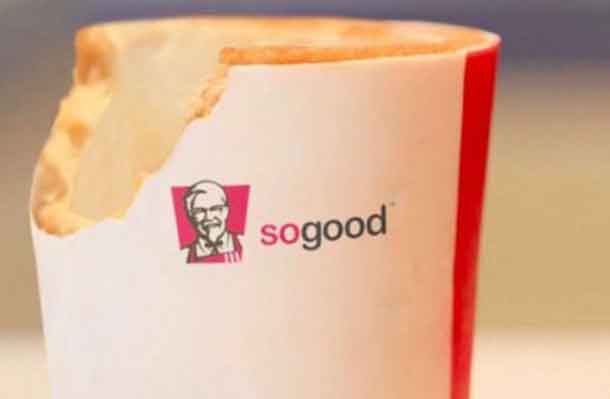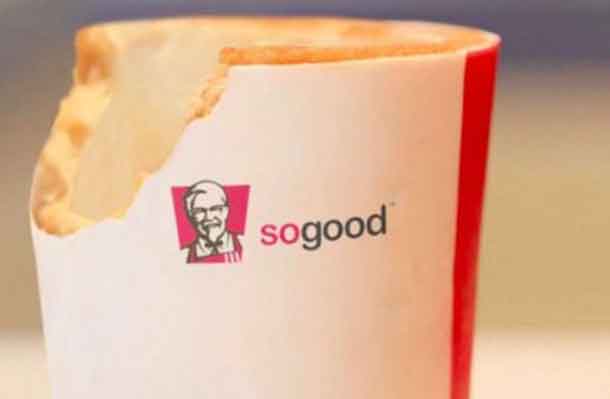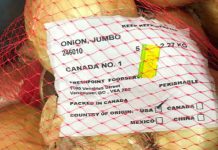
However, a strong case for taste and food safety will have to be made before consumers will be willing to eat their garbage
By Sylvain Charlebois
Senior Fellow
Atlantic Institute for Market Studies
Within a year, single-use plastics and excess packaging have become public enemy No. 1. Everyone is talking about how our lives are overrun by too much plastic.
A recent Greenpeace-led audit looked at waterways waste and companies involved. Much of the plastic trash cleaned up from Canadian shorelines this fall was traceable to five companies: Nestlé, Tim Hortons, PepsiCo, the Coca-Cola Co. and McDonald’s. All these companies are part of the food industry, which is hardly surprising.
As consumers look for convenience and more portable food solutions, this problem won’t go away. In fact, it could get worse if nothing is done. Canadians households spend roughly 35 percent of their food budget outside a grocery store and that percentage increases every year. People walking around with plastic containers, bags, wrappers and cups will grossly increase.
Demographics are also complicating things. Since more people live alone, single servings are becoming more popular. That too requires more packaging.
The food service, retail and processing sectors are fully aware of this environmental conundrum.
But what’s brutally unclear for companies is how to deal with it.
The whole situation is made worse by the fact that plastic use has become an international political issue.
In the food industry, conversation on green supply chains focuses on compostable and even edible solutions. Plenty of technologies already exist and more are being developed.
In 2010, PepsiCo Canada came out with the first compostable bag for its SunChips. This package was to completely break down in a hot, active compost pile in approximately 14 weeks. Some tests concluded that it didn’t. An influential social media campaign led to the compostable SunChips bag’s downfall. The company pulled it from the market less than a year after its introduction.
Since then, cities – which play a key role in completing the food product lifecycle through landfill and compost services – have been more reluctant to accept anything without proper due diligence. As cities accept food packaging in green bins, retailers should promote these green solutions.
So we’re now seeing an increasing number of compostable packaging on the market, which is surely a step in the right direction.
Edible packaging is also gaining ground. Imagine if everything on grocery store shelves can be eaten. Research has come a long way but it hasn’t been easy. The first generation of edible packaging was made from starch, which often failed to keep food fresh.
But the United States Department of Agriculture (USDA) has been working on new-generation edible packaging that should be ready in 2019.
Those products include casein-based food packaging, made from milk proteins. It’s edible and more efficient than other types of packaging since it keeps oxygen away from the food for an extended period.
Also, edible fabric can be infused by vitamins and probiotics to make it more nutritious.
Seaweed also is getting attention. Humans have wrapped sushi with seaweed for centuries, so it’s only natural to extend it beyond Japanese delicacies. Costs and availability are still unclear.
These are all promising solutions but no business model has yet been developed, so we don’t know how edible packaging will affect retail prices. This is certainly a great concern to retailers and restaurants.
Other issues include matters of taste and food safety. Reducing plastic waste by eating packaging is intriguing, but not every consumer would consider the concept appetizing. A case has to be made to entice consumers to eat their garbage away.
Logistics are also an issue. Temperatures vary greatly throughout the supply chain, making it challenging for edible packaging to preserve the integrity of products that often must travel thousands of kilometres.
Nevertheless, startups are rampant. According to Transparency Market Research (TMR), demand for edible packaging could increase on average by 6.9 per cent a year through 2024 and ultimately be worth almost $2 billion worldwide.
So consumers will be given an opportunity to save the planet by eating food and its packaging.
In the meantime, Greenpeace can continue to blame companies for the rubbish we find in oceans and waterways, but in fact we’re all responsible for this mess.
And if we want more compostable and edible packages, we may have to pay for it. But a planet premium bought with these new technologies may be worth it.
Sylvain Charlebois is dean of the Faculty of Management and a professor in the Faculty of Agriculture at Dalhousie University, senior fellow with the Atlantic Institute for Market Studies, and author of Food Safety, Risk Intelligence and Benchmarking, published by Wiley-Blackwell (2017).
© Troy Media
The views, opinions and positions expressed by all Troy Media columnists and contributors are the author’s alone. They do not inherently or expressly reflect the views, opinions and/or positions of Troy Media.






